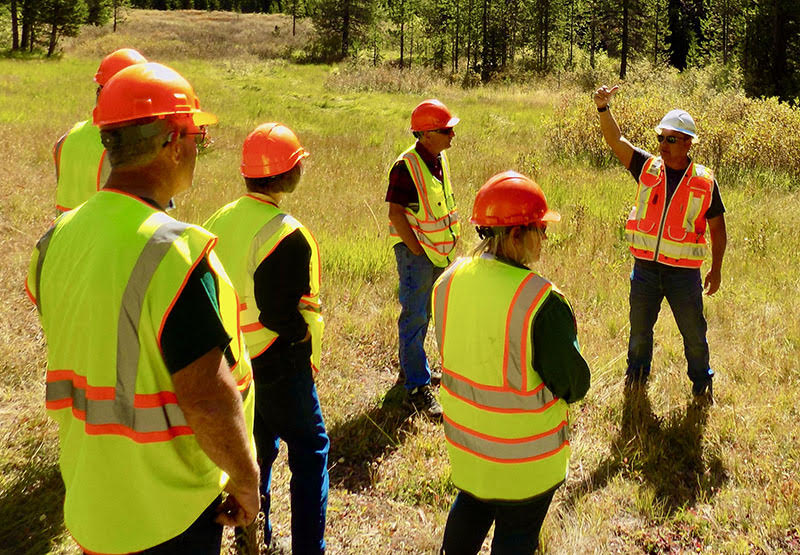Steel power poles, transformers, breakers, conductors, and other electrical equipment needed to operate a gold and antimony mine in Valley County have been ordered from Idaho Power.
Perpetua Resources recently announced it has agreed to pay the utility company $90 million to supply the materials needed to upgrade about 64 miles of power line, install nine new miles of power line, and build 10 electrical substations between McCall and Stibnite, the site of the mine, which would be about 40 air miles east of McCall.
Idaho Power received an initial payment of $18.8 million, with the remaining $71.2 million to be paid in quarterly payments scheduled through 2027, according to Perpetua’s most recent securities filing.
The contract does not include the cost of completing the power line upgrades, which are currently estimated to cost $150 million, said Natalie Podgorski, a Perpetua spokesperson.
Overall, construction of the mine is expected to cost nearly $2 billion. Podgorski said the company plans to finance up to 85% of construction with a loan from the Export-Import Bank of the United States Make More in America Initiative.
Construction timeline unclear
Perpetua expects to begin construction this summer, but multiple factors could cause that timeline to slide.
Earlier this month, conservation groups challenged the Forest Service’s approval of the Stibnite mine in U.S. District Court. The lawsuit asks a judge to halt construction on the mine, though no ruling has been made on that request yet.
Meanwhile, federal workforce cuts initiated by President Donald Trump’s Department of Government Efficiency (DOGE) have resulted in 36 Payette National Forest employees being fired, according to Brad LaPlante, a Payette employee and union representative.
On Wednesday, the Forest Service was among federal agencies that were issued guidance on further workforce reduction plans that are to be completed by March 13.
It is unclear whether the firings completed so far or those still to come will affect additional work to be completed by the Payette, the lead permitting agency for Perpetua’s mining proposal.
Perpetua not expecting delays
“At this point, Perpetua Resources has not felt any direct impacts from the recent layoffs with the Payette and Boise National Forests and do not anticipate it will affect development of the Stibnite Gold Project,” Podgorski said.
Although the Payette issued approval of the mine in January, the approval requires it to review and approve additional submissions by Perpetua.
Without donors like you, this story would not exist.
Make a donation of any size here
That includes an updated operating plan that incorporates additional water monitoring requirements imposed by the approval, as well as a cost estimate and financial assurance package for clean-up of the site after mining ends.
“These items are all still in progress and will be submitted to the U.S. Forest Service as soon as they are ready,” Podgorski said.
Forest Service officials declined to comment on whether the layoffs could affect the construction timeline.
“It would be inappropriate for us to comment on anything under current litigation,” said Angela Hawkins, a press officer at the agency’s regional office in Ogden, Utah.
Insight from former Payette staffer
However, a recently retired Payette employee with knowledge of the permitting process said the workforce cuts, in tandem with a hiring freeze that predates the Trump administration, may slow the implementation of programs required by the approval.
“A next step for the Forest Service was to hire a team of employees for the conduct of the line regarding monitoring of regulatory requirements and administration,” said Brian Harris, who worked on the permitting process involving the mine and served as the Payette’s spokesperson since 2013 prior to retiring Oct. 31.
The monitoring and administrative roles apply not only to Perpetua’s mining operations, but also to the planned two to three-year construction phase, Harris said.
The number of monitoring employees needed was unknown at the time of Harris’ retirement.
Harris said existing employees could be re-assigned to complete the monitoring, or new employees could be hired for the work under DOGE guidelines that allow one new employee to be hired for every four fired. However, he said attracting new hires could be difficult as the agency’s workforce is reorganized by DOGE.
“It’s gonna be a real challenge to get new employees on the Payette National Forest to be a part of a monitoring or administrative team for the Stibnite Gold Project,” he said.






